CG Trader
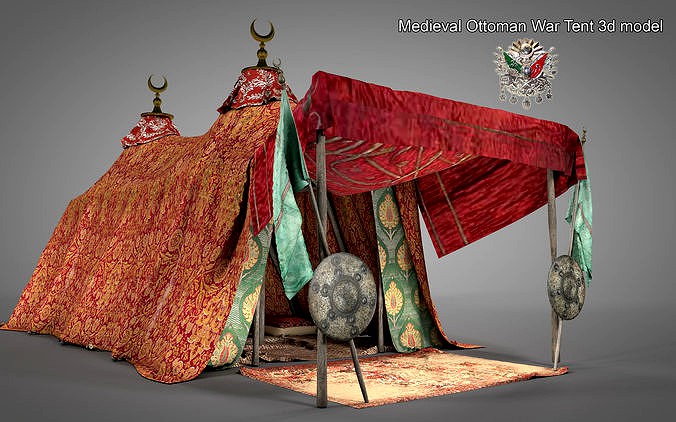
Medieval Ottoman War Tent Set 3d model
by CG Trader
Last crawled date: 1 year, 10 months ago
Medieval Ottoman War Tent 3d model
.renderable cinema4d file
.................
war tent
..............
table
.............
sofa
...............
carpet
..................
flag
.................... nice set
..........
THE OTTOMAN TENTS
The Ottoman Turkish tents which have survived to the present day in many European museum collections as well as in the Military Museum and Topkapi Palace Museum in Istanbul are magnificent works of art, richly decorated with embroidery and appliéd work. Equally fascinating is the structure of the different types of tent, the different functions they served, and their roles in Ottoman life. Tents were widely used for military campaigns, ceremonies and celebrations, and country excursions by the sultans and their subjects. With respect to their military use in the campaigns conducted by the Ottomans since the empire was founded in 1299, we find that tent culture was of crucial importance in the achievements of the army. When conquering new lands for the expanding empire, enabling a large army to travel the long distances involved was a challenge that demanded highly efficient organisation. In this respect the experience and traditions of ancient Turkish nomadic culture proved invaluable, and the extremely widespread use of tents in Ottoman Turkey shows that this legacy of the past was kept alive in many other aspects of Turkish life. Foreign observers of the Ottoman army were impressed particularly by its discipline and organisation. Campaigns were the outcome of highly detailed advance preparation within a well established system. As well as the provisions and equipment which the soldiers would need, repairs and maintenance of equipment were thought of, so that even cobblers accompanied the army to repair shoes and boots. It is therefore no surprise to find that the military encampments themselves were extremely well organised for maximum convenience, from the palace-like tent complex of the sultan himself, down to the tents of the lowest ranking soldiers. Two sets of imperial tents were taken on campaign, which meant that while the sultan was occupying one complex, the tent pitchers could march on ahead and have the second erected ready for his arrival at the next halting place. This 'walled' tent palace was as much a symbol of his power and splendour as the stone palace in the capital, and so large that according to Antoine Galland writing in 1673 the sultan's tents were carried on six hundred camels.
................................................ Miniatures illustrating the festivities held for the circumcision of the sons of Sultan Ahmed III in 1720 include a detailed picture of the imperial tent complex, and in earlier miniatures illustrating campaigns during the reign of Suleyman the Magnificent in the 16th century we see how the screen wall around the complex was crenellated like a battlement, underscoring the architectural relationship between the tent and stone palaces. This relationship can also be seen in the decoration of the tent walls, which usually consisted of rows of rectangular panels worked in a design of columns linked by arches, thus creating the effect of arcades around the walls. Some of the tents were enormous, consisting of 24 such panels. Depending on the size, the tent roofs were supported by one or more posts. The exquisite ornamentation both inside and out of the tents used by the Ottoman sultans made them imposing dwellings fit for a ruler. On ceremonial occasions tents served to create a splendid theatrical setting, as we see vividly portrayed in miniature paintings depicting banquets, audiences and celebrations which took place in the imperial tent complex over the centuries. The imperial tents were richly decorated as if they were pavilions, and often had designs resembling tiled panels, usually in floral patterns, either in appliés work using cloth of different colours, or embroidered in various stitches using silk and metal thread.
...........................
The Ottoman empire arose in the thirteenth century from Turkish nomads who used tents for military encampments and as moveable homes. As the empire became sedentary, the Ottomans were unwilling to leave their tents behind. “In imagining Edirne in the first half of the fifteenth century,” writes Amy Singer, a prominent scholar of Ottoman history, “one must add the possibility of semi-permanent encampments on the city’s outskirts as an integral part of its built and urban landscape, an extension in felt, leather, and weaving to the stone, mortar, and wood of the city’s mosques, markets, and dwellings.” It sounds like something out of Italo Calvino’s Invisible Cities: a solid city of brick and stone—and its mutable cloth counterpart. The Ottoman imperial tent complex has often been described as a “mobile palace.” Yet, according to art historians, the architecture of the Topkapi Palace suggests that it was designed as a kind of stationary tent complex. One French traveler, Corneille Le Bruyn, put his finger on it (quite unintentionally) when he wrote: “As for the Buildings which compose the Body of the Seraglio, there is no regularity of Architecture nor any Symmetry observ’d in it; but ‘tis a heap of uneven Houses separated from one another in the Nature of Tents, built for the most part on Large Arches.” Weekly Digest
Get your fix of JSTOR Daily’s best stories in your inbox each Thursday. Your Email
Privacy Policy Contact Us
You may unsubscribe at any time by clicking on the provided link on any marketing message. More charitably, we could say that the Topkapi is set up as a series of courtyards dotted with free-standing pavilions. A tent-inspired palace may have seemed undignified to a French observer, but it made perfect sense to the Ottomans. It was a nod to their history and to their military might. The tents varied widely: from multistory structures to tiny, one-person-sized parasols. There were bathroom tents, kitchen tents, and even the ominous “execution tent.” The most lavish among them were festooned with colorful appliqué and brightened with gilded leather. When ambassadors from Austria visited Suleyman the Magnificent in his royal tent, they were so astonished by the riches on display that they were struck dumb, transformed into “speechless corpses.” The tent-city of the Sultan by Abdulcelil Levni, 1720
The tent-city constructed around the Bosphorus for the occasion of the circumcision of Sultan Ahmed III’s sons, 1720 via Wikimedia Commons
Festivals and celebrations provided the impetus for a number of masterpieces of tent architecture. In 1720, Sultan Ahmed III threw a fifteen-day festival celebrating the circumcision of his four sons. It was a truly fabulous event. Ten thousand jars of sherbet were ordered to feed the guests. And in the book the sultan commissioned to commemorate the event, there was a one-page spread devoted to the tents: the massive three-poled banquet tent; the gunners’ tents, with their rows of cannons; and, of course, the imperial tent city, its poles tipped with gold, enclosed with a cloth fence. The tent corps even created a tent replica of the Tower of Justice, a fixture of the Topkapi Palace. The tent is a recurring presence in Ottoman miniature paintings. Often, it serves as an integral aspect of the monarch’s appearance, framing his dignified figure and setting it apart from the surrounding landscape, like the scrollwork around an illuminated letter. If we return, then, to Sultan Ahmed, he of the eternal tent pegs, the flattery begins to make sense. The tent was a symbol of Ottoman heritage, a representation of military power, and a component of the sultan’s royal identity.
thank you medieval ottoman war tent bedouin arabian desert game old warrior arabic jerusalem ramadan islam mubarak dubai fantasy armor architectural afghanistan other
.renderable cinema4d file
.................
war tent
..............
table
.............
sofa
...............
carpet
..................
flag
.................... nice set
..........
THE OTTOMAN TENTS
The Ottoman Turkish tents which have survived to the present day in many European museum collections as well as in the Military Museum and Topkapi Palace Museum in Istanbul are magnificent works of art, richly decorated with embroidery and appliéd work. Equally fascinating is the structure of the different types of tent, the different functions they served, and their roles in Ottoman life. Tents were widely used for military campaigns, ceremonies and celebrations, and country excursions by the sultans and their subjects. With respect to their military use in the campaigns conducted by the Ottomans since the empire was founded in 1299, we find that tent culture was of crucial importance in the achievements of the army. When conquering new lands for the expanding empire, enabling a large army to travel the long distances involved was a challenge that demanded highly efficient organisation. In this respect the experience and traditions of ancient Turkish nomadic culture proved invaluable, and the extremely widespread use of tents in Ottoman Turkey shows that this legacy of the past was kept alive in many other aspects of Turkish life. Foreign observers of the Ottoman army were impressed particularly by its discipline and organisation. Campaigns were the outcome of highly detailed advance preparation within a well established system. As well as the provisions and equipment which the soldiers would need, repairs and maintenance of equipment were thought of, so that even cobblers accompanied the army to repair shoes and boots. It is therefore no surprise to find that the military encampments themselves were extremely well organised for maximum convenience, from the palace-like tent complex of the sultan himself, down to the tents of the lowest ranking soldiers. Two sets of imperial tents were taken on campaign, which meant that while the sultan was occupying one complex, the tent pitchers could march on ahead and have the second erected ready for his arrival at the next halting place. This 'walled' tent palace was as much a symbol of his power and splendour as the stone palace in the capital, and so large that according to Antoine Galland writing in 1673 the sultan's tents were carried on six hundred camels.
................................................ Miniatures illustrating the festivities held for the circumcision of the sons of Sultan Ahmed III in 1720 include a detailed picture of the imperial tent complex, and in earlier miniatures illustrating campaigns during the reign of Suleyman the Magnificent in the 16th century we see how the screen wall around the complex was crenellated like a battlement, underscoring the architectural relationship between the tent and stone palaces. This relationship can also be seen in the decoration of the tent walls, which usually consisted of rows of rectangular panels worked in a design of columns linked by arches, thus creating the effect of arcades around the walls. Some of the tents were enormous, consisting of 24 such panels. Depending on the size, the tent roofs were supported by one or more posts. The exquisite ornamentation both inside and out of the tents used by the Ottoman sultans made them imposing dwellings fit for a ruler. On ceremonial occasions tents served to create a splendid theatrical setting, as we see vividly portrayed in miniature paintings depicting banquets, audiences and celebrations which took place in the imperial tent complex over the centuries. The imperial tents were richly decorated as if they were pavilions, and often had designs resembling tiled panels, usually in floral patterns, either in appliés work using cloth of different colours, or embroidered in various stitches using silk and metal thread.
...........................
The Ottoman empire arose in the thirteenth century from Turkish nomads who used tents for military encampments and as moveable homes. As the empire became sedentary, the Ottomans were unwilling to leave their tents behind. “In imagining Edirne in the first half of the fifteenth century,” writes Amy Singer, a prominent scholar of Ottoman history, “one must add the possibility of semi-permanent encampments on the city’s outskirts as an integral part of its built and urban landscape, an extension in felt, leather, and weaving to the stone, mortar, and wood of the city’s mosques, markets, and dwellings.” It sounds like something out of Italo Calvino’s Invisible Cities: a solid city of brick and stone—and its mutable cloth counterpart. The Ottoman imperial tent complex has often been described as a “mobile palace.” Yet, according to art historians, the architecture of the Topkapi Palace suggests that it was designed as a kind of stationary tent complex. One French traveler, Corneille Le Bruyn, put his finger on it (quite unintentionally) when he wrote: “As for the Buildings which compose the Body of the Seraglio, there is no regularity of Architecture nor any Symmetry observ’d in it; but ‘tis a heap of uneven Houses separated from one another in the Nature of Tents, built for the most part on Large Arches.” Weekly Digest
Get your fix of JSTOR Daily’s best stories in your inbox each Thursday. Your Email
Privacy Policy Contact Us
You may unsubscribe at any time by clicking on the provided link on any marketing message. More charitably, we could say that the Topkapi is set up as a series of courtyards dotted with free-standing pavilions. A tent-inspired palace may have seemed undignified to a French observer, but it made perfect sense to the Ottomans. It was a nod to their history and to their military might. The tents varied widely: from multistory structures to tiny, one-person-sized parasols. There were bathroom tents, kitchen tents, and even the ominous “execution tent.” The most lavish among them were festooned with colorful appliqué and brightened with gilded leather. When ambassadors from Austria visited Suleyman the Magnificent in his royal tent, they were so astonished by the riches on display that they were struck dumb, transformed into “speechless corpses.” The tent-city of the Sultan by Abdulcelil Levni, 1720
The tent-city constructed around the Bosphorus for the occasion of the circumcision of Sultan Ahmed III’s sons, 1720 via Wikimedia Commons
Festivals and celebrations provided the impetus for a number of masterpieces of tent architecture. In 1720, Sultan Ahmed III threw a fifteen-day festival celebrating the circumcision of his four sons. It was a truly fabulous event. Ten thousand jars of sherbet were ordered to feed the guests. And in the book the sultan commissioned to commemorate the event, there was a one-page spread devoted to the tents: the massive three-poled banquet tent; the gunners’ tents, with their rows of cannons; and, of course, the imperial tent city, its poles tipped with gold, enclosed with a cloth fence. The tent corps even created a tent replica of the Tower of Justice, a fixture of the Topkapi Palace. The tent is a recurring presence in Ottoman miniature paintings. Often, it serves as an integral aspect of the monarch’s appearance, framing his dignified figure and setting it apart from the surrounding landscape, like the scrollwork around an illuminated letter. If we return, then, to Sultan Ahmed, he of the eternal tent pegs, the flattery begins to make sense. The tent was a symbol of Ottoman heritage, a representation of military power, and a component of the sultan’s royal identity.
thank you medieval ottoman war tent bedouin arabian desert game old warrior arabic jerusalem ramadan islam mubarak dubai fantasy armor architectural afghanistan other
Similar models
3dwarehouse
free

Turkish Seraglio
... in istanbul. #arabian #empire #fountain #harem #islamic #istanbul #moorish #oriental #ottoman #palace #seraglio #sultan #topkapi
3dwarehouse
free

topkapı sarayı
...oman sultans. approximately 700,000 sq m. in its initial years in an area of 80.000 m² in the area of the palace is today. 3]
cg_trader
$19

Suleiman The Magnificent | 3D
...tan of the ottoman empire. reformed and improved civil and military codes; united a group of unstable territories into an empire.
cg_trader
$14

28mm Napoleonic Ottoman Nazim-I Cedit Infantry | 3D
...reforming their military after napoleon's campaign in egypt and saw action against the russian army in the russo turkish war.
cg_trader
$60

Topkapi Palace full exterior scene
...man sultans.
3ds max vray model
include 2020 and 2017 max version full exterior model, fbx, blender,obj,stl,textures and renders
3dwarehouse
free

Sultanahmet Camii, Blue Mosque
...of the founder, a madrasah and a hospice. the sultan ahmed mosque has become one of the greatest tourist attractions of istanbul.
cg_trader
$35

Ottoman Sultan Suleyman Tugra Gold Man Ring | 3D
...urkish gold ring by nudora j
weight: 18k - 5.9 gr
14k - 4.9 gr
gem weight: 0.31ct
total gem count: 38
printable.
cg_trader
$5

Magnificent Kanuni Sultan Suleyman 3D Model
...ier fighter body human male head man male character human body human character human head human male male body male head man body
3dwarehouse
free

Turkish Kiosk
...itecture #constantinople #dome #harem #islamic #oriental #orientalism #ottoman #palace #porte #seraglio #sublime #turkey #turkish
3dwarehouse
free

Süleymaniye Mosque,Istanbul, Turkey
...mimar sinan. the construction work began in 1550 and the mosque was finished in 1557. #istanbul #mosque #ottoman #turkey #turkish
Tent
3d_export
$19

military tent camping tent campaign tent
...military tent camping tent campaign tent
3dexport
military tent camping tent campaign tent
archibase_planet
free

Tent
...tent
archibase planet
tent booth bivouac
tent
archibase_planet
free
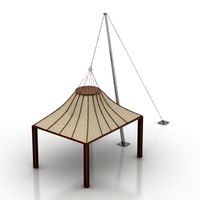
Tent
...tent
archibase planet
tent marquee
tent n200412 - 3d model (*.gsm+*.3ds) for exterior 3d visualization.
archibase_planet
free
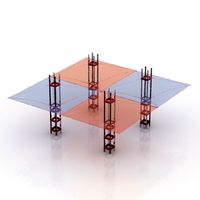
Tent
...tent
archibase planet
tent awning marquee
tent n100512 - 3d model (*.3ds) for exterior 3d visualization.
archibase_planet
free

Tent
...tent
archibase planet
tent marquee booth
tent n041112 - 3d model (*.3ds) for exterior 3d visualization.
archibase_planet
free
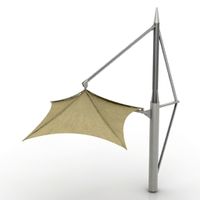
Tent
...tent
archibase planet
tent marquee
tent 2 n010512 - 3d model (*.gsm+*.3ds) for exterior 3d visualization.
archibase_planet
free

Tent
...tent
archibase planet
tent awning marquee
tent n110512 - 3d model (*.gsm+*.3ds) for exterior 3d visualization.
archibase_planet
free

Tent
...tent
archibase planet
tent awning marquee
tent n010512 - 3d model (*.gsm+*.3ds) for exterior 3d visualization.
archibase_planet
free
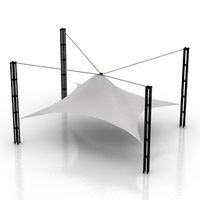
Tent
...tent
archibase planet
tent awning marquee
tent n290612 - 3d model (*.gsm+*.3ds) for exterior 3d visualization.
archibase_planet
free
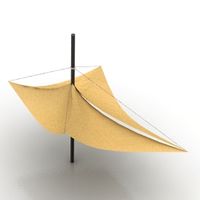
Tent
...tent
archibase planet
tent marquee awning
tent n050712 - 3d model (*.gsm+*.3ds) for interior 3d visualization.
Ottoman
3d_export
$5

ottoman
...ottoman
3dexport
red ottoman
3d_export
$5

ottoman
...ottoman
3dexport
ottoman for living room or bedroom
design_connected
$11

Ottoman
...ottoman
designconnected
ottoman computer generated 3d model.
design_connected
$13

Ottoman
...ottoman
designconnected
kathy kuo home ottoman computer generated 3d model.
3ddd
$1

Classic Ottoman
...classic ottoman
3ddd
chair , ottoman
classic ottoman
3d_export
$6

Ottoman
...ottoman
3dexport
ottoman іf you need to contact me, here are my contacts mrkai173@meta.ua
3ddd
$1

ottoman Pompadour
... pompadour , пуф
ottoman pompadour, романтичность , нежность.....
3ddd
$1

Ottoman
...ottoman
3ddd
пуф
turbosquid
$20

ottoman
...turbosquid
royalty free 3d model ottoman for download as fbx on turbosquid: 3d models for games, architecture, videos. (1395800)
turbosquid
$5

Ottoman
...turbosquid
royalty free 3d model ottoman for download as max on turbosquid: 3d models for games, architecture, videos. (1309388)
Medieval
3d_export
$5

Medieval cart- carreta medieval
...medieval cart- carreta medieval
3dexport
medieval cargo cart
3d_ocean
$12
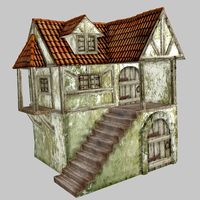
Medieval House
...medieval house
3docean
dirty house medieval old
medieval house
3d_ocean
$19
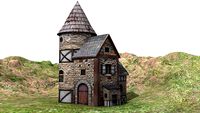
Medieval House
...medieval house
3docean
bar house medieval old house
medieval house
turbosquid
$23

Medieval Gate & Medieval Key
... available on turbo squid, the world's leading provider of digital 3d models for visualization, films, television, and games.
3d_ocean
$15

medieval charrette
...medieval charrette
3docean
a by charrette faynar medieval
a medieval charrette made on 3ds max
3d_export
$5
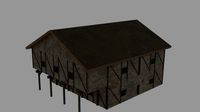
medieval house
...medieval house
3dexport
medieval house
turbosquid
$5

Medieval
...bosquid
royalty free 3d model medieval for download as blend on turbosquid: 3d models for games, architecture, videos. (1342526)
3d_export
$8
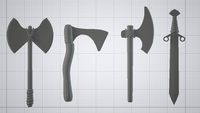
medieval
...medieval
3dexport
3d_export
$5
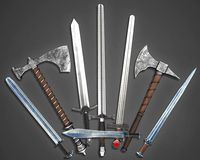
medieval
...medieval
3dexport
3d_export
$5
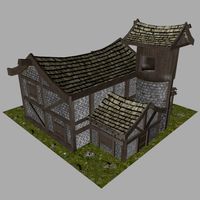
medieval house
...medieval house
3dexport
medieval house with internal access
War
3d_ocean
$10

War machine
...war machine
3docean
camuflage machine robot war war machine
war machine created in 3dmax 2009 15.497-poly count
turbosquid
$45

War
...rbosquid
royalty free 3d model war 3d model for download as on turbosquid: 3d models for games, architecture, videos. (1512087)
3d_export
$5

robot war
...robot war
3dexport
modern war robot
3d_export
$29

world war 2 and 1 war scene
...world war 2 and 1 war scene
3dexport
world war level scene
3d_export
$65

war
...war
3dexport
simple rendering of the scene file
3d_export
$5

war mech
...war mech
3dexport
war mech with texthure, animation, low poly,
3d_export
$22

war scene
...gtrader.com/3d-models/military/character/war-army https://fruits124.artstation.com/store/dbkxr/war-scene use it a complete scene.
3d_export
$5

war kitbash
...war kitbash
3dexport
kitbash included sword, spear, shield, knife, helmet, an axe for war
3d_export
$5

at at - star wars
...at at - star wars
3dexport
modelo de at at de star wars listo para texterizar, renderizar y animar.
3d_export
$5

war cannon
...war cannon
3dexport
war cannon modeling in zbrush and 3dmax unwap; yes material in substance painter and vray
Set
archibase_planet
free

Setting
...setting
archibase planet
setting cover place setting
setting - 3d model (*.gsm+*.3ds) for interior 3d visualization.
archibase_planet
free
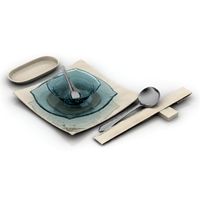
Setting
...setting
archibase planet
setting place setting cover
setting - 3d model (*.gsm+*.3ds) for interior 3d visualization.
archibase_planet
free

Setting
...setting
archibase planet
setting place setting cover
setting - 3d model (*.gsm+*.3ds) for interior 3d visualization.
3d_export
$8

decorative set mens set
...decorative set mens set
3dexport
decorative set men's set
archibase_planet
free
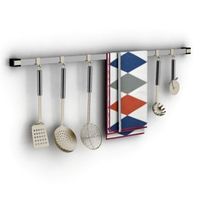
Set
...anet
set kitchen ware kitchen set kitchen tools
set kitchen tools n281114 - 3d model (*.gsm+*.3ds) for interior 3d visualization.
archibase_planet
free
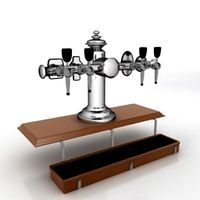
Set
...set
archibase planet
beer set bar equipment
beer set - 3d model for interior 3d visualization.
archibase_planet
free
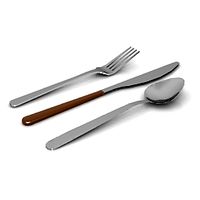
Set
...set
archibase planet
cover place setting
set - 3d model (*.gsm+*.3ds) for interior 3d visualization.
archibase_planet
free
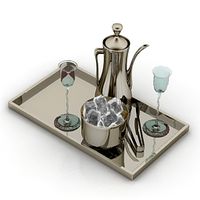
Set
...set
archibase planet
kitchen set kitchen ware
set - 3d model (*.gsm+*.3ds) for interior 3d visualization.
archibase_planet
free

Set
...set
archibase planet
set cup glass kitchen ware
set - 3d model (*.gsm+*.3ds) for interior 3d visualization.
archibase_planet
free
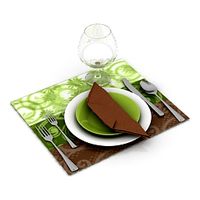
Set
...set
archibase planet
flatware cover place setting
set n311210 - 3d model (*.gsm+*.3ds) for interior 3d visualization.
